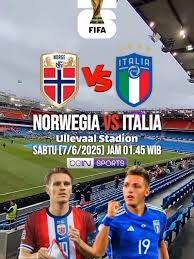Norway vs Italy: A Comparative Overview

Introduction
The comparison between Norway and Italy presents a fascinating study of two distinct European nations, each with its own unique culture, geography, and economy. With Norway known for its stunning fjords and rich natural resources, and Italy renowned for its profound historical heritage and culinary excellence, the contrasts are significant. Understanding these differences not only enhances our appreciation of each country but also sheds light on their roles in the broader European landscape.
Cultural Differences
Italy, with its famous cities like Rome, Venice, and Florence, is steeped in history and art. The country is the birthplace of the Renaissance and hosts numerous UNESCO World Heritage Sites. Italian culture is characterized by its delicious cuisine, fashion, and vibrant festivals which play a vital role in social life.
In contrast, Norway’s culture is predominantly influenced by its rugged natural environment. It values outdoor activities and is known for its traditions, such as the celebration of Midsummer and the Norwegian Constitution Day. The Norwegians also place a strong emphasis on egalitarianism and community welfare.
Economic Overview
Economically, Norway and Italy differ markedly. Norway has a wealthy and technically advanced economy, largely driven by oil and gas exports. The country consistently ranks high on GDP per capita, heavily benefiting from its natural resources. In 2022, Norway’s GDP per capita was around CAD 89,000, making it one of the richest countries in the world.
Conversely, Italy faces economic challenges, including high public debt and sluggish growth. The Italian economy is diversified, with strengths in manufacturing, particularly in luxury goods and automobiles. In 2022, Italy’s GDP per capita stood at approximately CAD 38,000, reflecting a significant economic divide compared to Norway.
Geographical Elements
Geographically, Norway’s vast wilderness includes deep fjords, mountainous terrains, and extensive coastlines, which attract outdoor enthusiasts and tourists alike. The northern parts of Norway are located within the Arctic Circle, offering unique natural phenomena like the Midnight Sun and Northern Lights.
Italy, possessing a more temperate climate, showcases diverse landscapes ranging from the Alps in the north to the Mediterranean coastline. The geography of Italy aids its agriculture, making it one of the top producers of wine and olive oil globally.
Conclusion
The contrast between Norway and Italy is striking across cultural, economic, and geographical dimensions. While Norway exemplifies a model of wealth and egalitarian social structures, Italy’s rich history and dynamic lifestyle highlight its cultural significance. For travelers and scholars alike, understanding these differences provides valuable insights into the unique characteristics of each nation, revealing how geography can shape a country’s culture and economic landscape.









